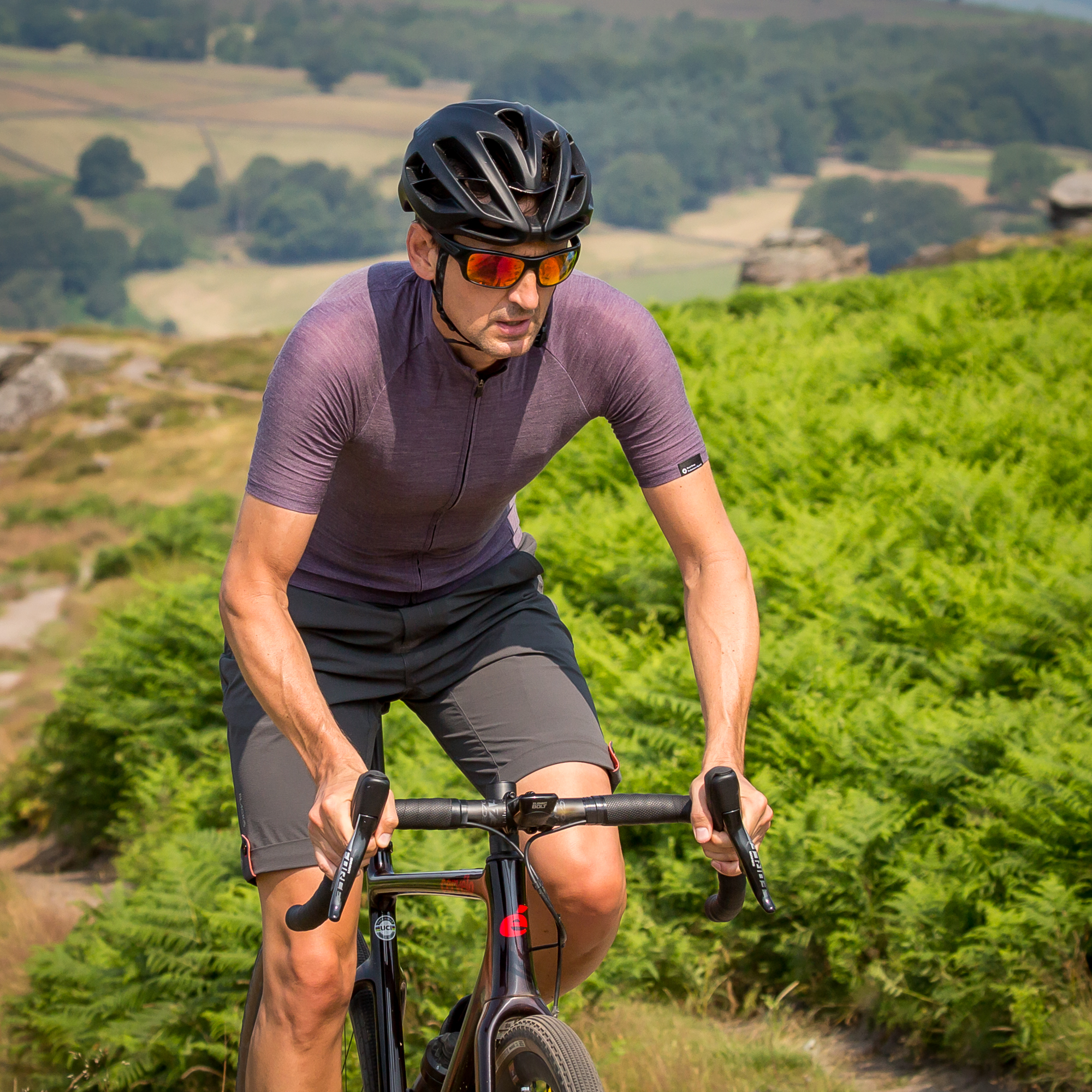FSA K-Wing AGX carbon handlebar is a thing of beauty, but at a price
Beautifully sculpted and very comfy, the FSA K-Wing AGX carbon handlebars also offer lots of integration options, but the price smarts
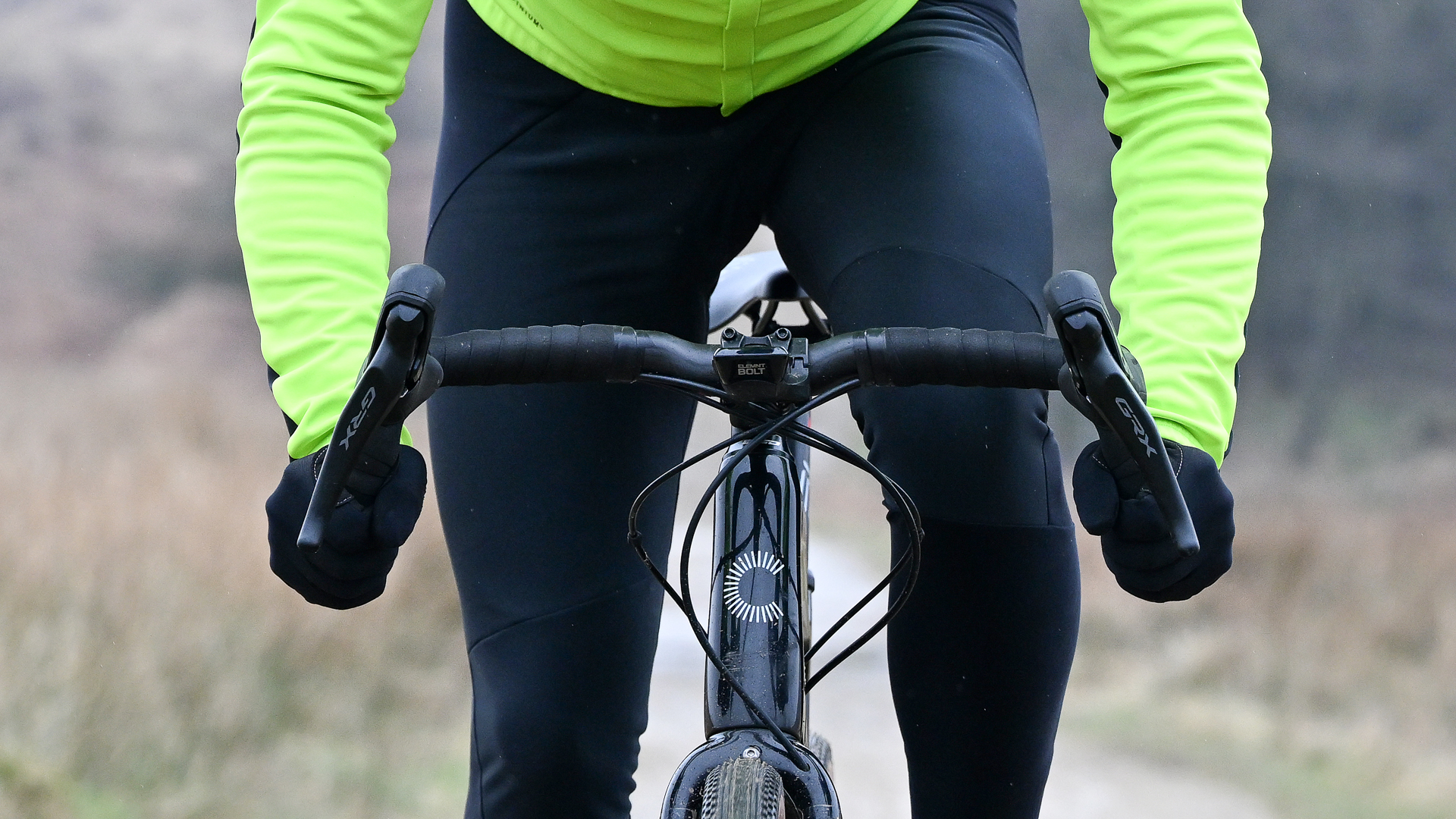
Gorgeous, comfortable, light and commensurately expensive, the FSA K-Wing AGX carbon handlebar is a lovely thing. The sculpting of the carbon genuinely makes the bars more comfortable to hold in most positions and the conservative flare suits both road and gravel bikes. However, smaller riders might struggle with the girth of the aero tops, and many of us will struggle with the price.
-
+
Comfort
-
+
Low weight
-
+
Good cable management options
-
+
Versatile
-
-
High price
-
-
Some will want more flare
-
-
Wide tops if taped
You can trust Cycling Weekly.
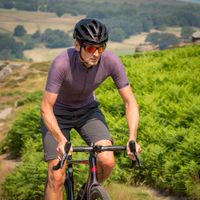
For most of us, the best road bike handlebars are a factory-fit-and-forget component, especially these days of one-piece bar/stem combos and fully internal cable routing. However, gravel and all-road bikes are still more likely to have a 2-piece cockpit, so if you fancy an upgrade, then FSA has a premium option for you: the K-Wing AGX carbon handlebar.
These are intended as a multi-purpose option, with relatively conservative numbers in terms of drop, reach and flare, making them just as well suited to an all-road bike as a gravel bike. FSA offers the K-Force AGX carbon bar for those wanting a more gravel-specific bar - with an even more premium price tag.
The K-Wing promises excellent ergonomics, low weight and is compatible with all cable routing options and gear systems. It's available in 400, 420, 440, 460, 480mm widths.
Construction
The FSA K-Wing AGX may well be the most sculpted handlebar I’ve encountered. FSA has made full use of carbon’s mouldable properties to produce a bar with multiple dimples, divots, holes and flat spots whilst still retaining an ostensibly normal silhouette. It isn’t outrageously flared or dramatically shaped but is instead the result of lots of thoughtful and subtle manipulation.
The basic dimensions are those of a standard, compact gravel bar with 115mm drop, 76mm reach and 12° flare, but those numbers do not tell the whole story.
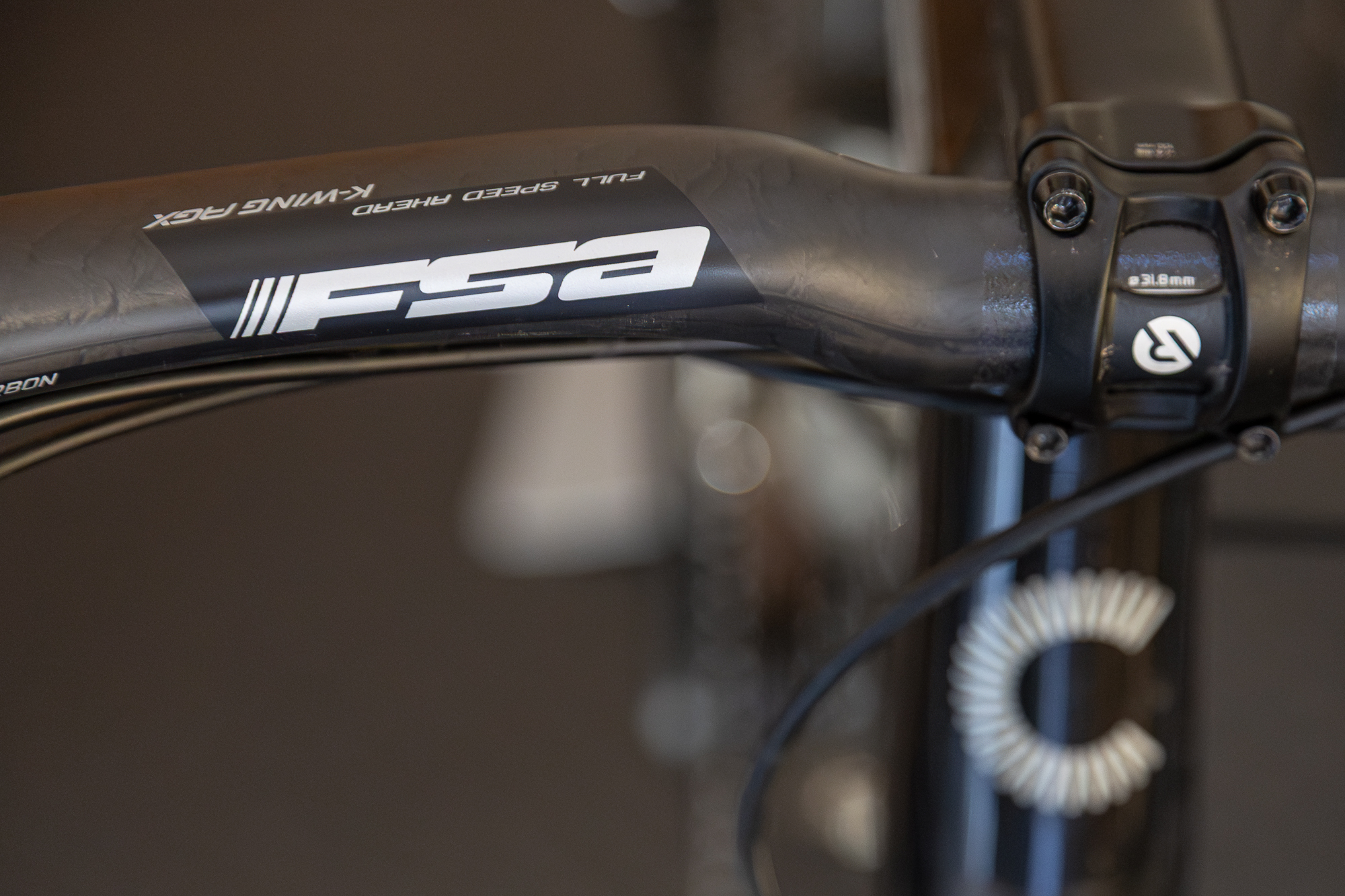
There is a slight rise from the stem
From the round, textured centre, the bars rise by 5mm (much less than the Specialized Hover bar) and flatten into an aero shape whilst also gently curving forward by 10°, making them look quite aggressive. The outside corner of the bend towards the hoods is depressed to the point of being concave and the outside of the flared drops under the levers is also flattened and squared off.
Underneath, there are ingress and egress points to run cables internally which can exit into the stem if compatible (FSA’s Aerodynamic integrated Cable Routing (ACR)) or just before the stem if fully internal cabling isn’t an option. Should you choose not to run the cables through the bars at all then there is a runnel on the underside to nestle them into.
The latest race content, interviews, features, reviews and expert buying guides, direct to your inbox!
Phew - I said that there was a lot going on with this bar!
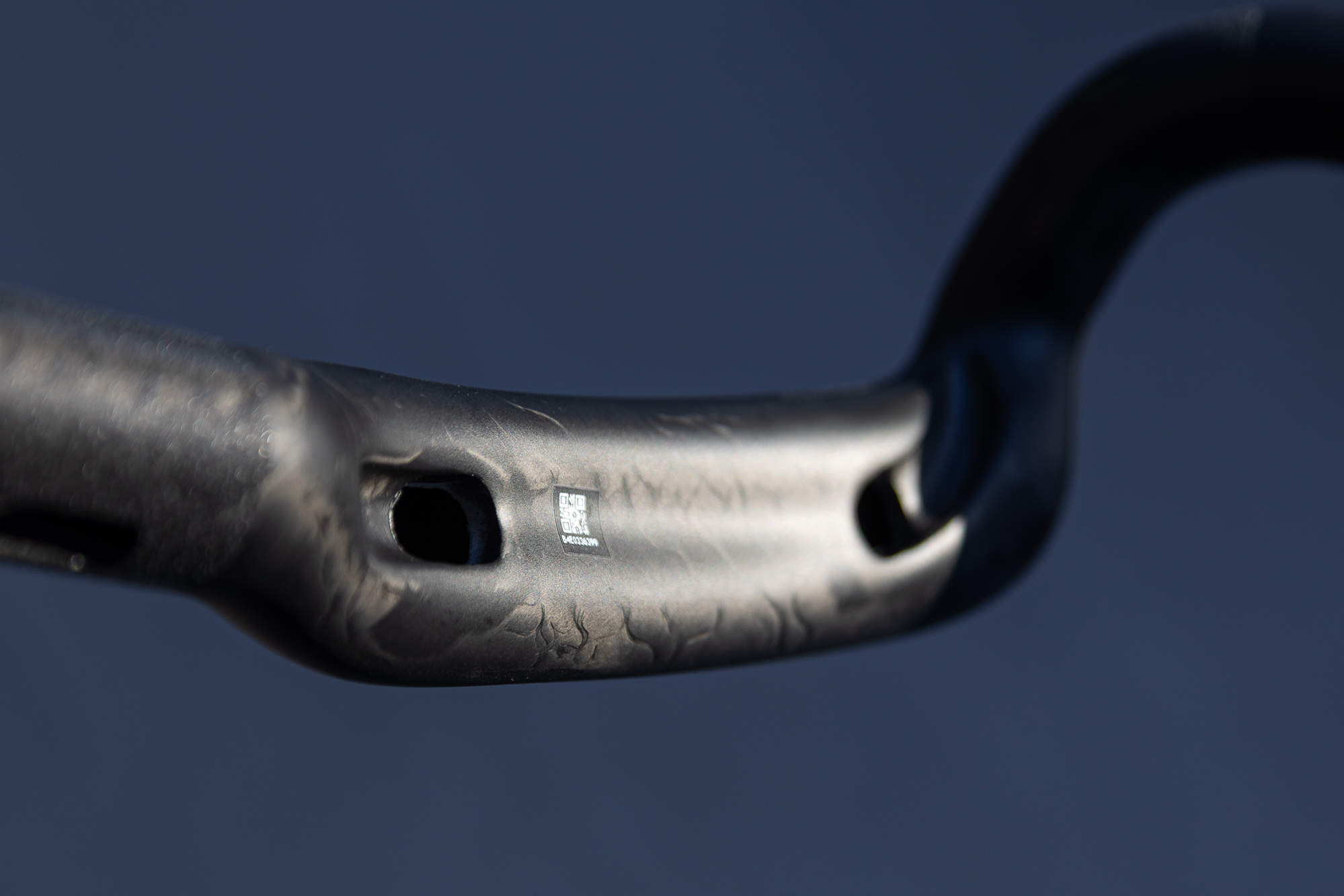
Cables can run under the bar, through the bar and/or through the stem
The ride
Obviously, as a self-confessed weight weenie, the first port of call was the scales - FSA gives a weight of 205g for the 420mm option but the 440mm test pair were 228g. Still very light considering everything that is going on with them and about 70g lighter than the stock aluminium bars that came on my Cannondale Topstone - a decent but not earth-shattering saving on a gravel bike. My tape measure suggested that centre-to-centre behind the hoods was 43cm and 50cm at the end of the drops.
I chose not to run the cables internally as my stem isn’t compatible and it didn’t seem worth it for a few centimetres through the tops as I was intending to fully tape the bars anyway. If you were going to leave the tops untapped or could run the cables through the stem as well then this would give a super clean look to the front end and leave FSA’s graphics visible.
The forward sweep added a little bit of reach to my position although this was offset to some extent by the slight rise and narrower width compared to my original handlebars. Cannondales C3 gravel bars have a 16° flare, whereas the K-Wing AGXs offer a more reserved 12°, and I found that I preferred this. The wider bars could occasionally feel a bit ungainly and spread my arms awkwardly whereas the FSA bars felt far more natural when in the drops.
The ovalised tops, on the other hand, were perhaps a little too large when wrapped in the best handlebar tape; I don’t have small hands, but the combination of winter gloves, 3.5mm padded Profile Designs tape and the aero shape was a little bit of a stretch for me. Without tape or without gloves they might have been fine, but with below-zero temps and rough trails, I wasn’t about to experiment with either!
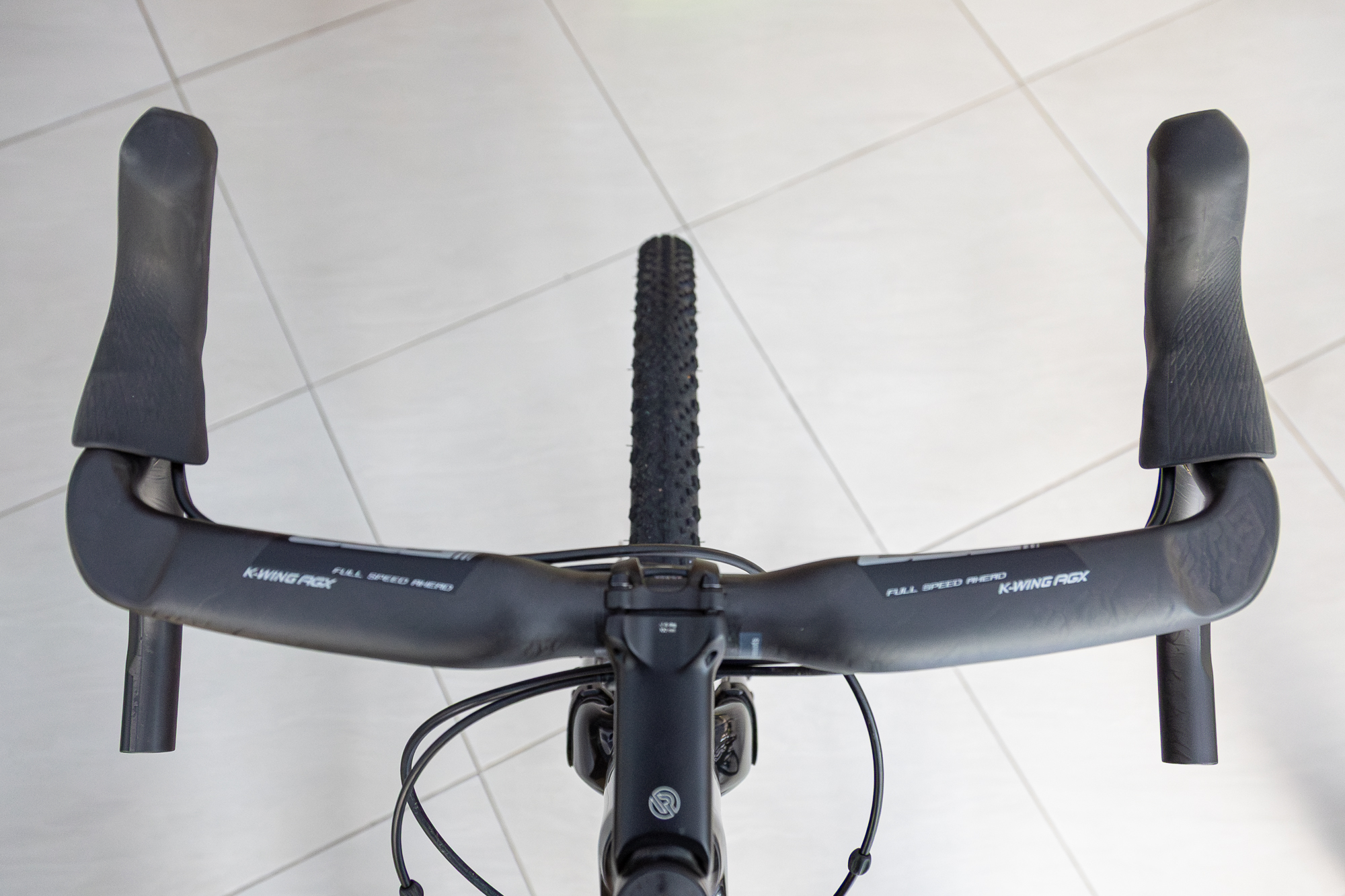
There is a noticeable forward sweep to the bars
I really loved the flattened sections on the corners leading to the hoods. Given (much) warmer weather I generally ride without gloves, and although I don’t suffer from ulnar issues, long off-road rides can lead to a bit of soreness. These dimples gave me a lovely, flat section that definitely reduced pressure on the heel of my hands and it became a favourite position to ride in if not fully on the hoods.
Although I liked the narrower, less flared dimensions, the squared-off tubing of the drops wasn’t particularly noticeable to me, although I confess that I don’t spend much of my gravel riding time down there anyway.
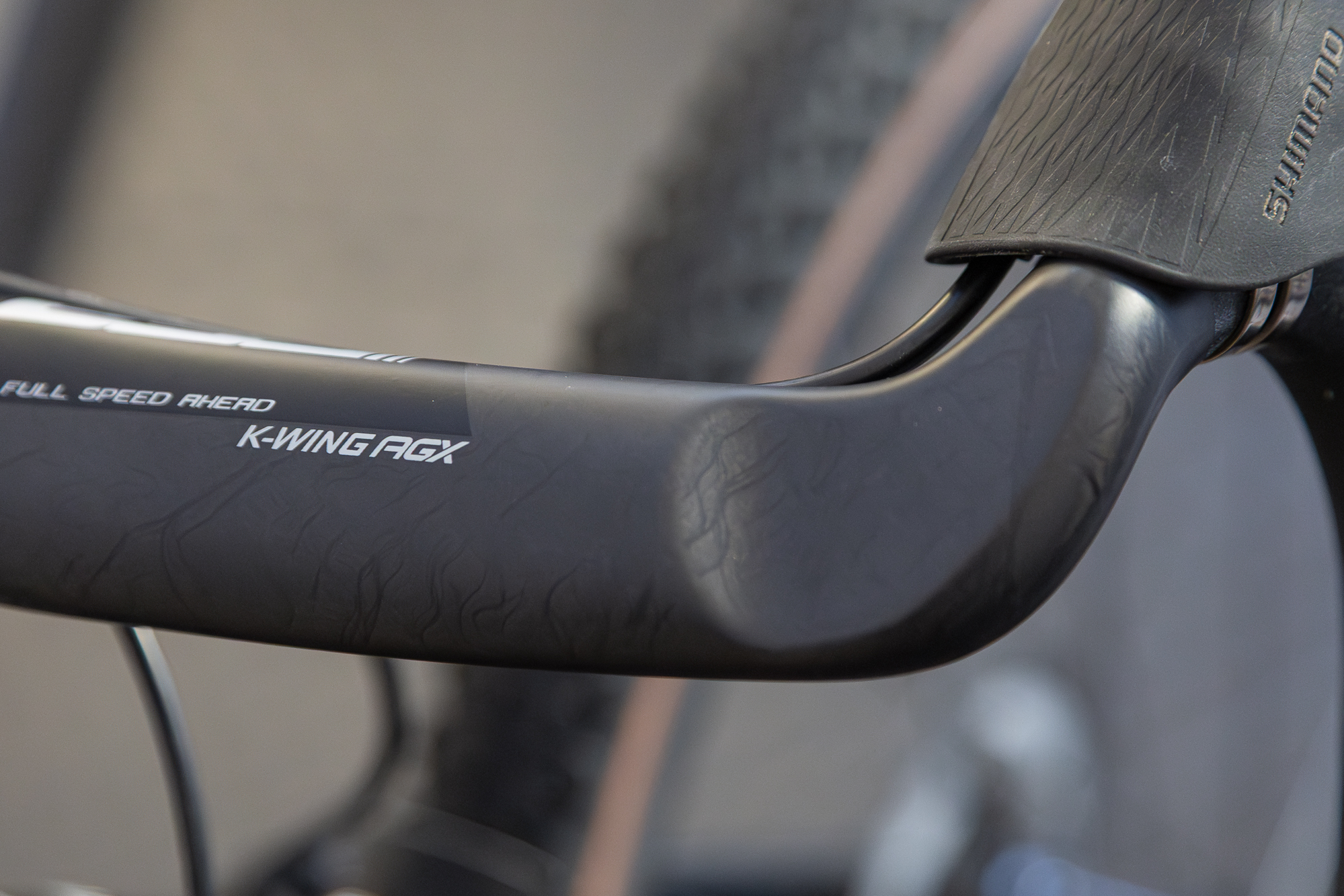
Flattened corners help make the bars very comfortable
I’d be lying if I tried to claim that I could detect any form of extra vibration damping thanks to the high-grade carbon construction of the bars on my 45mm tyre-equipped gravel bike with a Redshift suspension stem, but there was no untoward flex when out of the saddle either. Lore would suggest that there should be some extra damping from the carbon, and perhaps on a more rigid bike with narrower, higher-pressure tyres it would be more noticeable.
And finally, aesthetically, they looked superb, adding some extra purpose and subtle bling to the bike as carbon components often do.
Value and conclusion
The price of the FSA K-Wing AGX carbon handlebar is a heady £340, which although it is in line with many other high-end carbon road bars seems a lot for a gravel bike build somehow. Perhaps it is the thought that gravel bikes are often treated rather less considerately than mollycoddled summer road bikes and that the likelihood of damaging them seems higher.
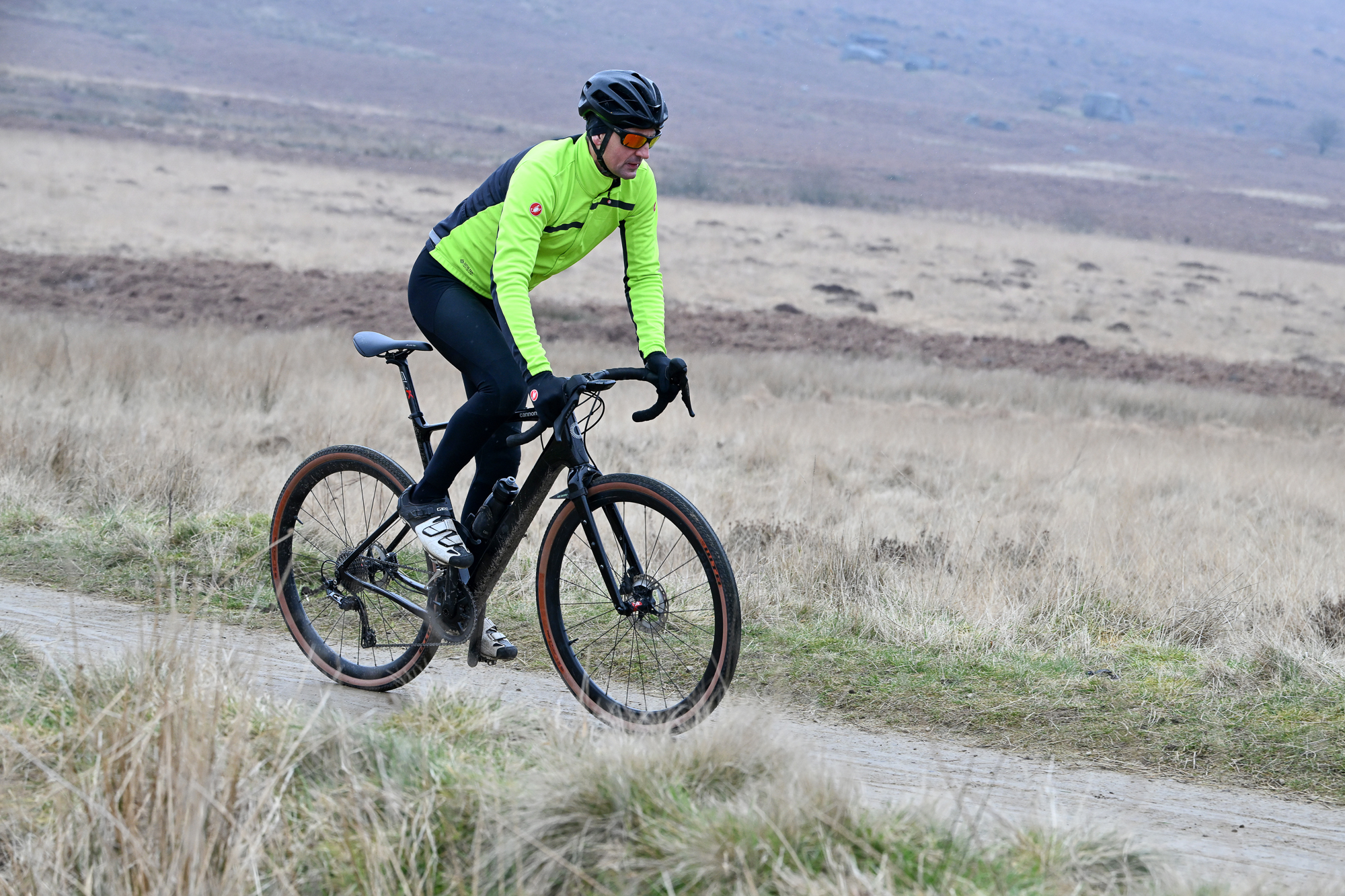
The FSA K-Wing AGX bars were very comfortable on long rides
I was surprised by how much difference the bars made in terms of comfort though, and how much nicer they were to ride compared with my basic bars. The formed carbon was undoubtedly a more comfortable place to rest my hands and the overall shape suited me very well. If you are building a dream gravel racer without a one-piece set-up or perhaps if you suffer from hand/ulnar issues then they are a lovely, highly ergonomic option, but for the rest of us, £340 is a lot for something to crash, tie luggage to and get filthy every weekend.
I think that they would be ideal on a high-end all-road bike. The shape is perfect for long-distance mile-munching whilst the slight flare still feels perfectly natural on or off-road and the small weight advantage might be more relevant than on a gravel bike. Also, the tops could be left untaped making them easier to hold and they wouldn’t be quite as much at risk of terminal damage.
Price aside, these are a 5 star product with no real flaws unless you want a wider flare, but at over £300 they have to forgo half a star.
Tim Russon is a writer and photographer who has worked in the outdoor and cycling industry for over 20 years. He can’t remember a time when he didn’t own a bike and has road, gravel, mountain and retro bikes in the shed. His favourite place to ride is the Dolomites, a simply stunning area which has breathtaking views and incredible roads combined with lovely food and great wine.
He prefers long, hot climbs in the big mountains, but as he lives on the edge of the Peak District he has to make do with short, cold climbs most of the time instead.
You must confirm your public display name before commenting
Please logout and then login again, you will then be prompted to enter your display name.
